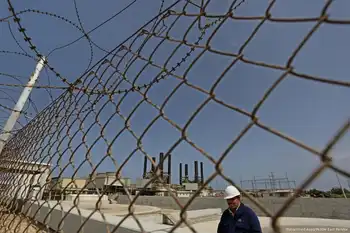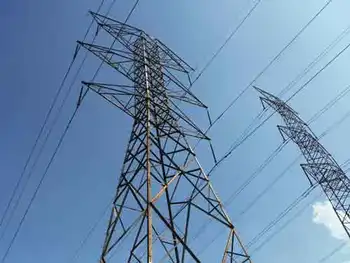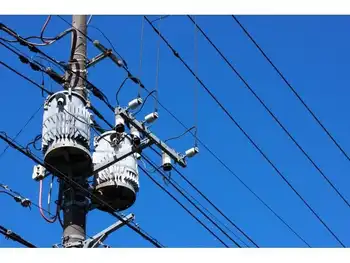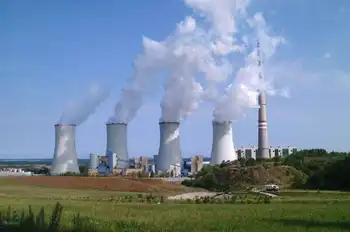Stimulus dollars energize efforts to smarten up grid
By Washington Post
Protective Relay Training - Basic
Our customized live online or in‑person group training can be delivered to your staff at your location.

- Live Online
- 12 hours Instructor-led
- Group Training Available
Outside, towers equipped with sensors tell the electric company exactly where a storm has knocked out power. The power grid itself can react to trouble, rerouting juice from a healthy part of the system or isolating itself to prevent a larger meltdown.
So far, this dramatization of "smart grid" technology is confined to an office park in northern Kentucky, but sponsor Duke Energy is one of many large utilities confident they can turn theater into reality for millions of customers, aided by billions of dollars in the federal stimulus package.
Smart grid is an essential component of President Obama's plan to change the nation's energy habits and reduce U.S. dependence on fossil fuels, especially foreign oil. It would energize his hopes for more jobs and fewer pollutants while remaking a network still moored to the 1950s.
The computer-based upgrade will become all the more important if Obama succeeds in creating a cap-and-trade system that would charge companies for excessive carbon emissions. That policy would put a premium on conservation and the delivery of solar and wind energy.
Smart grid refers to an array of switches, sensors and computer chips that will be installed at various stages in the energy-delivery process — in power stations, in electricity meters, in clothes dryers — in the next two decades, if the vision holds and the technology works.
"It's going to work," vowed Duke Energy's chief technology officer, David W. Mohler.
While sporadic improvements to the transmission system are underway, no city has yet been wired. Much of Boulder, Colo., may be first, later this year.
To accomplish the vast national upgrade will cost hundreds of billions of dollars and require what one utility regulator called a "major paradigm shift" in the way people understand and use electricity.
"Changing light bulbs and caulking are going to be very primitive compared to what we're going to end up doing," Duke Energy President James E. Rogers said here.
But first, the infrastructure must be installed. When Obama promises "a better, smarter electricity grid," he is talking about overhauling a network that resembles your grandmother's patchwork quilt, and is about as frayed.
The system, considered an engineering marvel two generations ago, essentially does one thing: It carries electricity from Point A to Point B, feeding it into a home or business whenever a light switch is flipped or a cellphone is recharged.
The network cannot do some very basic things. It cannot tell the customer what it costs to run a flat-screen television or make a shower five degrees hotter. It provides no way to reduce demand on hot days by arranging a discount for ordinary customers willing to turn down their air conditioners.
Nor can the existing grid pinpoint a power outage or heal it. Utilities depend on customers to tell them when the lights go out.
"We don't know until you tell us. And even then, we really don't know," Mohler said.
With tentacles that stretch into far valleys and sprawling subdivisions, the grid is a "hodgepodge of individual and regional systems" that costs consumers billions of dollars a year because of congestion, the Electricity Advisory Committee said in a report commissioned by the Energy Department.
The challenge now consuming utilities, governments and inventors is how to make the grid work better, from the power plant through substations into the laundry room. That requires hardware, software and a large education effort, just for starters.
"Just because you plug in a smart meter," said Southern Co. chief executive David Ratcliffe, referring to a household meter that gives the consumer more choices and control, "doesn't mean a customer will immediately take smart actions."
On a larger scale, experts say relatively inexpensive upgrades could help operators spot trouble before it hits in cases like last year's Texas brownouts, when the wind died and turbines stopped making power.
If sensors called phasor measurement units were installed at substations, an operator could see a problem developing and channel electricity to fill the gap, said Carl Imhoff, a specialist at the Energy Department's Pacific Northwest National Laboratory.
Increasingly, utilities can know on hot days when demand is starting to exceed supply. At an energy-thirsty factory in Toledo or an office building in Manhattan, customers can arrange to help the power company by agreeing to shut down machinery, elevators or air conditioning for a short time.
Power companies are intrigued with the idea of making similar deals with millions of individual consumers.
To flatten spikes in demand, smart meters will tell users when power is cheaper, in case they want to run dishwashers and dryers when it costs less. For customers who agree ahead of time, the meters can do the calculations and start the appliances automatically.
The equipment could also allow the company to reach into homes and turn off the customer's hot water heater for, say, 10 minutes at times of peak demand. Multiplied by a million customers, 10 minutes could make a big difference, said Duke Energy's Rogers.
Beyond relieving pressure on the grid, the central motivator is cost: To ensure enough electricity for short periods of peak demand, utilities must buy energy on the spot market or build expensive power plants that often stand idle.
"We'll build fewer power plants," Rogers said during a tour of the futuristic Envision Center. "We'll write software to optimize everybody's use of energy."
Power companies are aware that there is an aspect of Big Brother in the approach. They take pains to explain that customers can always keep their current rate plans.
A consortium of companies and scientists tested the idea on Washington's Olympic Peninsula. Some of the 110 customers were asked, in setting their thermostats, to balance their desires for warmth, low costs and reduced climate impact.
Some were given clothes dryers that had a button that showed red when electricity cost the most and green when the cost dropped. They had access to a Web site that showed their electricity use.
Imhoff said customers who moved their thermostat toward green-friendliness, setting their dials to respond to prices calibrated every five minutes, saw an average reduction of 10 percent in their monthly bills. The system's peak load dropped by about 15 percent.
During a three-day storm, the company told customers that reducing their usage would leave some power for all. Demand dropped to 50 percent of normal.
The next step is to test the technology on far larger samples. Imhoff said the stimulus package provides hundreds of millions for about half a dozen large-scale experiments.
Duke Energy is allocating $1 billion over the next five years to install sensors, intelligent meters and other upgrades, said Rogers, who said stimulus dollars would mean the Cincinnati area could be wired by 2012 — two to four years earlier than scheduled.
Alan Schriber, chairman of the Public Utilities Commission of Ohio, is a believer. He sent a letter to power company executives, urging them to get in line early for Energy Department funding.
"You can build wind generators and solar panels. All that's nice, but at the end of the day, reducing consumption is the cheapest way to do it," Schriber said. "You can set your refrigerator to go off for a few hours in the middle of the night. By decreasing demand, you forgo the need to continually build. That's the beauty of smart grid."











